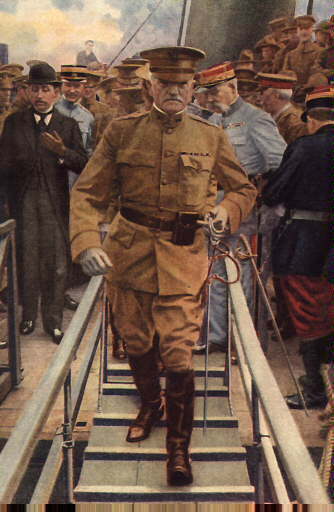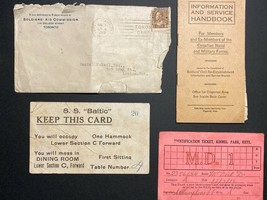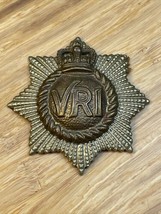Wwi, S.S. Baltic, Ephemera, Canadian, and 44 similar items
WWI, S.S. BALTIC, EPHEMERA, CANADIAN, DOCUMENT GROUPING, HISTORICAL, VINTAGE
$20.60 CAD
View full item details »
Shipping options
Seller handling time is 1 business day Details
No shipping price specified to CA
Ships from
United States

Return policy
Full refund available within 30 days
Details
Purchase protection
Payment options
PayPal accepted
PayPal Credit accepted
Venmo accepted
PayPal, MasterCard, Visa, Discover, and American Express accepted
Maestro accepted
Amazon Pay accepted
Nuvei accepted
View full item details »
Shipping options
Seller handling time is 1 business day Details
No shipping price specified to CA
Ships from
United States

Return policy
Full refund available within 30 days
Details
Purchase protection
Payment options
PayPal accepted
PayPal Credit accepted
Venmo accepted
PayPal, MasterCard, Visa, Discover, and American Express accepted
Maestro accepted
Amazon Pay accepted
Nuvei accepted
Item traits
| Category: | |
|---|---|
| Quantity Available: |
Only one in stock, order soon |
| Condition: |
Used |
| Country/Region of Manufacture: |
Canada |
| Country: |
Canada |
| Modified Item: |
No |
| Theme: |
Militaria |
| Original/Reproduction: |
Original |
| Conflict: |
WW I (1914-18) |
Listing details
| Seller policies: | |
|---|---|
| Shipping discount: |
No combined shipping offered |
| Posted for sale: |
June 2 |
| Item number: |
1750607300 |
Item description
WWI, S.S. BALTIC, EPHEMERA, CANADIAN, DOCUMENT GROUPING, HISTORICAL, VINTAGE
This is an interesting ephemera document grouping from a Canadian soldier returning home from France during WWI.
Envelope: Dated August 9, 1919. Addressed to Daniel McNeil, Esq., 309 Grey St., London, Ont. From the Soldiers Aid Commission, 116 College Street, Toronto. Inside of the envelope was the Information and Service Handbook.
Information and Service Handbook: This was for members ex-members of the Canadian Naval and Military Forces, WWI. 8-page documents which provided guidance and transition service for those going into civilian life after WWI.
S.S. Baltic Card: This was provided to the soldiers for their return trip home on the S.S. Baltic. It provided the soldier which he would sleep and eat. The reverse of the card identified which boat or raft in case of emergency and general safety orders.
Identification Ticket: Assigned to Daniel McNeil, Esq., No. 2356684, Company A, dated 13/3/19
During World War I, the Baltic carried troops from 1915 to 1918. She survived a torpedoing attempt and transported the first American troops to Europe, with General John J. Pershing on board. After the war, the ship continued its commercial service during the 1920s. Having become too old, she was finally replaced in 1932 and scrapped the following year, after nearly thirty years of career.
When World War I broke out in 1914, the Baltic continued to provide its classic service, as did the Adriatic which joined the other members of the Big Four on the Liverpool route. Joined by the Lapland, the Zeeland, and the Vaderland of the Red Star Line (the latter two being quickly renamed Northland and Southland respectively), they provided the only transatlantic service of the company, between Liverpool and New York while many other ships were requisitioned for the war effort, starting with the Celtic and the Cedric, converted to auxiliary cruisers. During this service, the Baltic collided with the steamship Comal at the exit of the Ambrose Channel in 19 November, 1914.
From 1915, the Baltic was, in turn, requisitioned to serve as a troop transport under the Liner Requisition Scheme. On April 26, 1917, she was attacked by the German submarine U-66 which tried unsuccessfully to torpedo her, and the U-boat engaged in a two-day pursuit, from which the Baltic emerged unscathed. Baltic was the vessel used to deliver Major General John J. Pershing and his staff to England. On 9 June 1917, the War Department released its first communique revealing the General's arrival in England:
"Baltic Carried Pershing Over. Londoners Preparing to Entertain American Soldiers. 10 U.S. Airmen in France. Pershing's Personal Staff and Other Members of General Staff Number 67 Officers and Are Accompanied by a Squad of 50 Privates and a Large Civilian Clerical Force- Pershing Anxious to Get into Harness. London, June 9.- Headed by Major General John J. Pershing, its commander, the first representation of the American army that is to enter the European war disembarked at a British port after an uneventful voyage of 10 days onboard the White Star liner Baltic. The party was received with full military honours and immediately entrained for London, where it arrived and was welcomed by the Earl of Derby, the minister of war; Viscount French commander of the British forces, and the American officials..."
In reference to this event, a commemorative plaque was then installed in the main hall of the liner.
During the war, she also carried large quantities of oil in her bunkers and double bottom. During the first ten months of 1918, she brought 32,000 Canadian soldiers to France. Finally, the ship ceased its military service on 12 December of that same year to resume its civilian service
|
Why are we showing these items?
Search Results
Category "Canada"
|

-
Refine your browsing experience
We can show you more items that are exactly like the original item, or we can show you items that are similar in spirit. By default we show you a mix.
This item has been added to your cart
 WWI, S.S. BALTIC, EPHEMERA, CANADIAN, DOCUMENT GROUPING, HISTORICAL, VINTAGE added to cart.
Only one available in stock
WWI, S.S. BALTIC, EPHEMERA, CANADIAN, DOCUMENT GROUPING, HISTORICAL, VINTAGE added to cart.
Only one available in stock
View Cart or continue shopping.
 Please wait while we finish adding this item to your cart.
Please wait while we finish adding this item to your cart.
Get an item reminder
We'll email you a link to your item now and follow up with a single reminder (if you'd like one). That's it! No spam, no hassle.
Already have an account?
Log in and add this item to your wish list.
























































